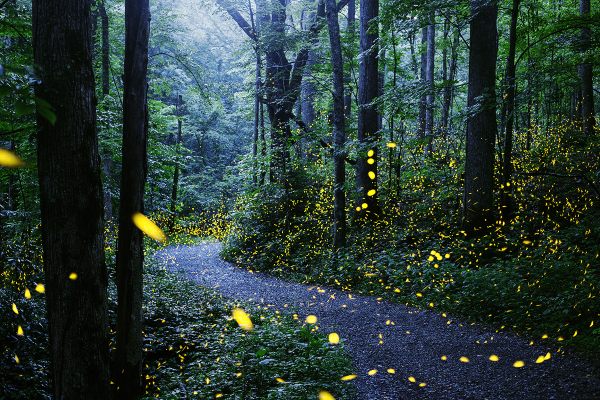
A Photographer Turned His Mumbai Window Into a Butterfly Garden
He spent $5 on a few water jugs and two succulents.
Rizwan Mithawala has clambered up trees to photograph the atlas moth, lost his way deep in the forest, and felt the sting of tick bites while chasing butterflies. As a conservation writer, editor, and photographer for the Wildlife Conservation Trust, his job takes him to national parks across India. Most weekends, he can be found at the Sanjay Gandhi National Park, a sprawling, 40-square-mile forest that boasts as many as 170 species of butterflies in the metropolis of Mumbai.
But the early stages of the coronavirus lockdown in India—one of the most sudden and stringent lockdowns in the world—confined Mithawala (and a billion other Indians) to his home. Parks, gardens, and other open spaces were shut down. Mumbaikars arguably had a rougher experience than many, given that they live on an island in the seventh most-populated city in the world. Many were confined to matchbox apartments, sometimes with two or three generations under one roof.
For Mithawala, there was one bright spot. “I had a 16-foot window,” he says cheerfully. His lockdown project was to tend to a butterfly garden, eight floors up and not far from the busy Mohammed Ali Road in South Mumbai.

The seed of the project was planted more than a year ago, when Mithawala and his mother Naeema were looking for ways to enjoy nature in the concrete jungle. As a photographer, Mithawala hoped to capture the life cycle of butterflies in colorful images. But he had a busy schedule, so the effort took a backseat until the arrival of COVID-19. Only then did Mithawala find the time to meticulously document the births of dozens of butterflies from his window.
Mithawala’s massive window has a safety grill with vertical and horizontal bars, which leave no space for potted plants. Instead, Mithawala realized that he could hang plastic water jugs from the horizontal bars. “The challenge was finding the right size: They had to be small enough to pass through the vertical bars, which had just a few inches between them.” After much experimentation, Mithawala managed to fit a green jug through the grill. It was the perfect color for a nature lover.
Before the pandemic began, Mithawala had visited a nursery at Maharashtra Nature Park, on the edge of Dharavi, to pick up a succulent called kalachoe. He knew that the plant served as a host for the red Pierrot butterfly, or Talicada nyseus. The jugs cost around 70 rupees apiece, or just under one U.S. dollar, and the plants cost 20 rupees, or just over a quarter. Mithawala spent 320 rupees—less than five dollars—on four jugs and two plants, from which he made cuttings and planted his garden.


“While it costs little, most people don’t think of creating a butterfly garden,” says the Indian naturalist Isaac Kehimkar, also known as the Butterfly Man of India. “They erroneously assume that an overcrowded city like Mumbai isn’t the best place to spot butterflies. But India has close to 1,400 species, and Mumbai is a haven for butterflies.” Kehimkar, the director and chairman of iNaturewatch Foundation, has spent decades chasing these colorful winged creatures. He is also the author of The Book of Indian Butterflies, published by the Bombay Natural History Society.
“Mumbai has a significant coastline, a good monsoon, and the Sahyadri mountain range also runs through the state of Maharashtra,” Kehimkar says. “All of this results in rich flora and fauna, which attracts butterflies.” The city’s butterflies, he says, have adjusted to city life. While the red Pierrot is a weak flier and normally stays close to the ground, urbanization and receding green spaces force the butterfly to fly higher in search of food.
There are four stages in the metamorphosis of the red Pierrot, starting with the eggs laid by adult females. “The red Pierrot lays multiple eggs at a time, but will usually lay only one egg on a leaf and flit to another leaf or plant,” Kehimkar says. To guard against predators, she doesn’t put all her eggs on one leaf. Next comes the caterpillar, which eats through the egg shell, feeds on the leaves, and grows to several times its initial size. The caterpillar sheds its skin four or five times before it moves onto the pupal stage. The pupa, or chrysalis, hangs off the leaf while an invisible transformation takes place inside. The chrysalis gets darker, and eventually the butterfly emerges; it takes about 15 minutes to dry off its wings and take flight.


During the interminable weeks of lockdown, Mithawala kept time by documenting the metamorphosis that was taking place above his windowsill. Using a Nikon camera with a macro lens, as well as a wide-angle lens, Mithawala clicked some stunning images: the exact moment that the female red Pierrot picked a leaf to lay the egg; the curious case of the caterpillar who attempted to pupate on the window grill, instead of a leaf; a spider and a caterpillar locked in a show of strength. One day, when COVID-19 is behind us, he hopes to collect them in a photo exhibition or a book.
While some of Mithawala’s images focus solely on his muse, others chronicle the city, just out of focus. You see the red Pierrot settling on a leaf against the backdrop of high rises and the blue tarps of an informal settlement. All across the skyline are windows just like his. But in these photos, the most vivid signs of life are the wings of a butterfly, right in front of the camera.



























Follow us on Twitter to get the latest on the world's hidden wonders.
Like us on Facebook to get the latest on the world's hidden wonders.
Follow us on Twitter Like us on Facebook